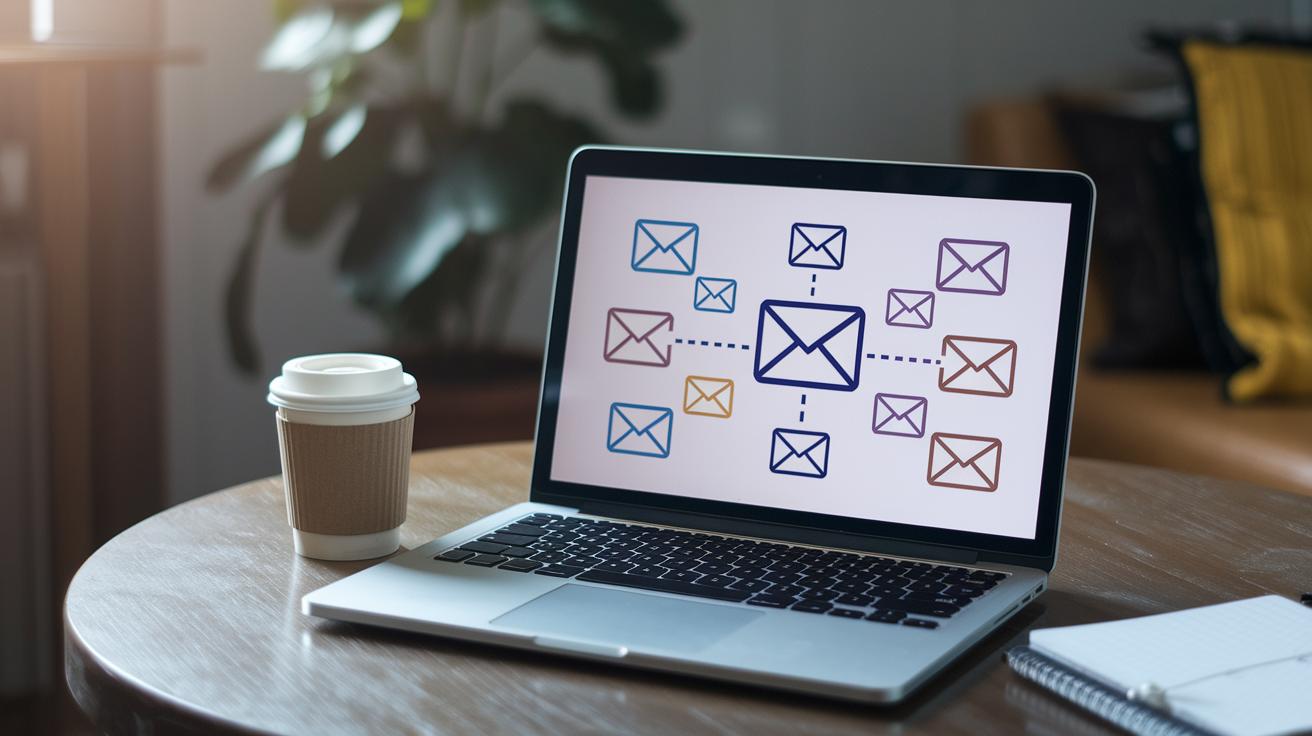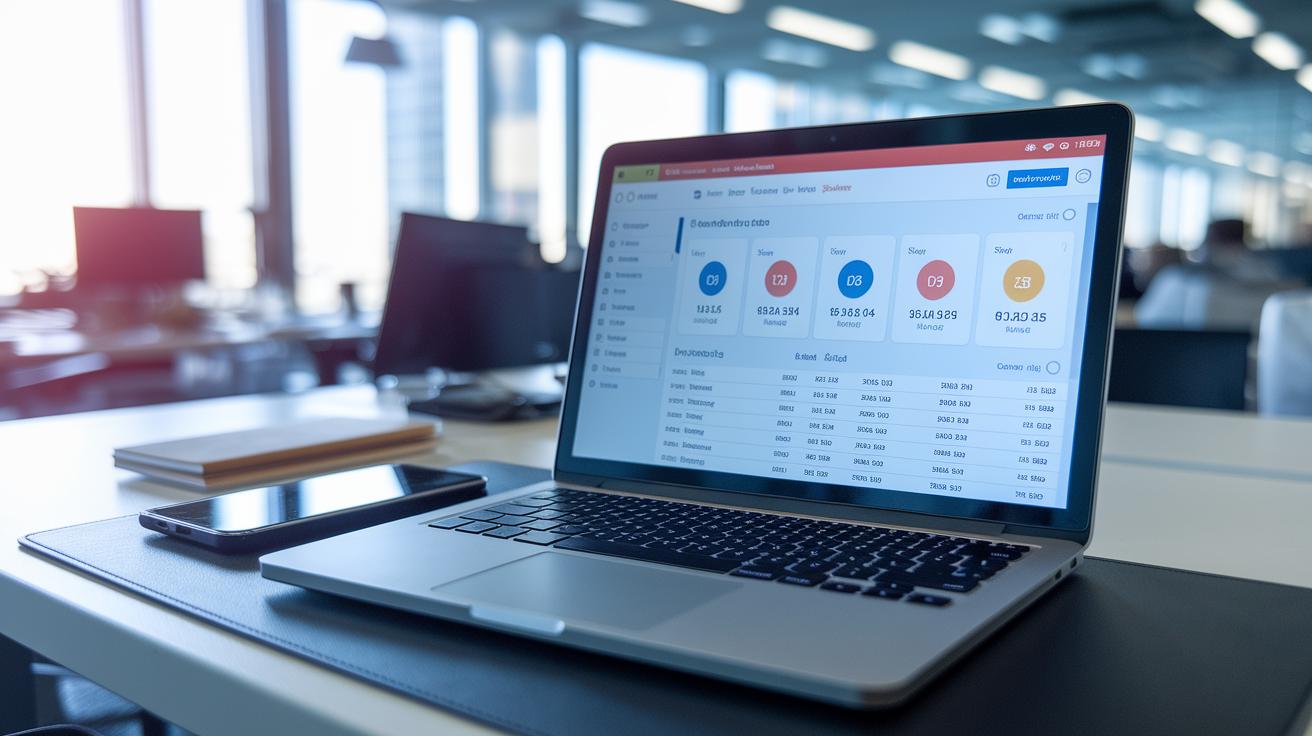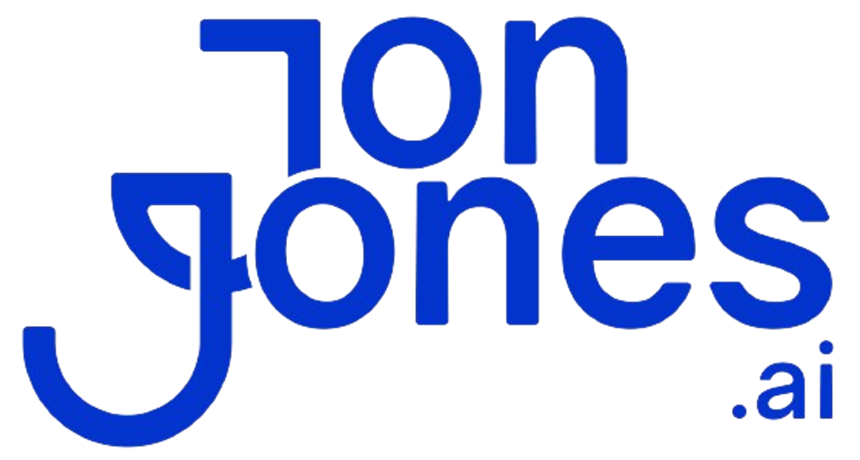Ever send a well-crafted email only to have it vanish in a busy inbox?
Email workflow automation (automatic sequences that send messages based on subscriber actions) makes sure your message lands at just the right moment.
Instead of one-size-fits-all blasts, we set up tailored drip sequences (timed emails that adapt when someone clicks, buys, or goes silent). They’ll boost your open rates and click rates, no manual follow-up needed.
In this post, we’ll share 10 practical tips to spark real engagement, save you hours each week, and deliver measurable ROI.
How Email Workflow Automation Drives Engagement and Efficiency

Ever feel like your emails vanish into thin air? Email workflow automation (automatic email sequences you build once) helps you hit inboxes at the perfect moment. You’ll stop sending one-size-fits-all blasts and start mapping out drip marketing sequences (timed messages that respond to user actions).
We’ll craft 3 to 30 emails that adapt based on clicks, purchases, or inactivity. If someone upgrades midstream, they jump to the right message. If someone goes quiet, they get a friendly re-engagement note.
No manual sending.
Just seamless follow-up.
Seventy-six percent of companies see return on investment (ROI) within 12 months. And 44% recoup their costs in six months. When you layer in behavior-based triggers and tailored content, you’ll save hours and boost open rates (the percent of people who open your email) and click rates (the percent who click links inside).
Here’s what you get:
- Personalized subject lines that feel like a one-to-one chat
- Smart product suggestions based on page views
- Timed follow-ups to keep leads warm
- Automated upsells and cross-sells exactly when interest peaks
It’s like having a 24/7 sales rep in software form. By using email workflows that speak to each stage of your funnel, we’ll help you engage more, cut churn, and speed up growth.
Types of Email Workflow Automation for Every Customer Lifecycle Stage

Every step in your customer’s journey needs its own email workflow. We set up automatic email series that nudge subscribers along and keep them engaged. Choose the sequence that fits your goal, and you’ll send the right message at the right time, all on autopilot.
Welcome & Onboarding Sequences
When someone signs up, we kick off your onboarding emails. Over 3 to 10 messages, we introduce your brand, share quick-start tips, and point new subscribers to support. By spreading these emails out over days or weeks, you build trust and help them reach that “aha” moment faster.
Abandoned Cart Recovery
When shoppers leave items in their carts, your abandoned cart flow jumps in. It usually sends 3 to 10 friendly reminders. With open rates around 43% and conversions above 8%, these emails are your ticket to recovered sales, especially if you include customer reviews or related product suggestions.
Free-Trial Ending Campaigns
When a free trial is winding down, we launch a sequence of 8 to 12 emails. From one week before the trial ends to two weeks after, you’ll mix feature highlights, user stories, and quick-start guides. If someone upgrades early, the workflow skips the trial-ending emails.
Repeat Purchase & Milestone Emails
You can trigger repeat purchase emails at set intervals, like one month, six months, or nine months, based on your product cycle. Thank customers, offer replenishment discounts, or celebrate anniversaries. A personal touch, loyalty rewards or early-bird perks, deepens connections and boosts lifetime value.
Re-Engagement Nurture Streams
When subscribers fall silent for weeks or months, your re-engagement workflow steps in. You might send a special deal, a survey, or fresh content to reignite interest. These streams keep your brand top of mind and invite dormant contacts back.
| Workflow Type | Trigger Event | Email Count | Objective |
|---|---|---|---|
| Welcome & Onboarding | New Signup | 3–10 | Build trust and introduce key features |
| Abandoned Cart Recovery | Cart Abandonment | 3–10 | Recover lost sales |
| Free-Trial Ending | Trial Expiration | 8–12 | Convert trials to paid plans |
| Repeat Purchase & Milestone | Time-Based Interval | Varies | Encourage repurchase and loyalty |
| Re-Engagement Streams | Inactivity | Any | Win back dormant subscribers |
Step-by-Step Setup of Email Workflow Automation

-
Set clear goals and map your customer’s journey.
Write down what you want, lead generation or customer retention. Then sketch each touchpoint: signup, download, or purchase. This roadmap guides the email flow you’ll build. -
Pick a workflow template that matches your goals.
Most CRM (customer relationship management) tools include prebuilt email workflow templates you can tweak. Check out an AI content creation workflow (https://jonjones.ai/?p=4138) for inspiration. Whether it’s a welcome series or a re-engagement flow, a template speeds things up. -
Configure trigger events and audience segments.
In your CRM tool, choose triggers like free trial signups or webinar downloads. Group contacts by behavior or profile info so each email lands with the right people. Clear segmentation boosts relevance and engagement. -
Build conditional branches and timing steps.
Add if/then splits based on opens or clicks. Then insert wait steps, hours or days, between messages to control pacing. These branches tailor each subscriber’s path when they don’t open or act. -
Draft and assign each email.
Write concise copy with a clear call to action for every trigger point. Make sure each message fits its trigger and reflects your brand voice. Then assign drafts to teammates or use your CRM’s editor for quick feedback. -
Activate, test, and monitor the workflow.
Finish setting up SMTP (simple mail transfer protocol) or link your Gmail API (application programming interface) for small teams. Then activate the sequence and we’ll watch real-time alerts. Use dashboards to spot delivery hiccups or dips in open rates.
Before you launch, test every trigger path. Send sample emails to test accounts, check personalization tokens, and confirm links. Once everything checks out, go live. Then track early metrics and tweak timing, branches, or copy based on actual data.
Comparing Top Email Workflow Automation Tools and Integrations

Choosing the right platform means comparing email automation tools by how easy they are to use, the triggers (actions that start an email), and the integrations they support. Simple, right?
Mailchimp shines with a simple editor, audience segmentation (grouping contacts), and ready-made templates. Its basic branching and clear campaign stats mean you’ll see results fast.
ActiveCampaign gives you conditional logic (if/then email paths), event tracking (monitoring user actions), and deal pipelines (visual sales stages) so your team stays aligned. You can even score leads or send SMS texts right from the same workflows.
HubSpot’s drag-and-drop builder lets you map out multi-step flows in minutes. You’ll also get built-in A/B testing (comparing two email versions) to split-test subject lines or content blocks with a couple clicks.
Zapier connects Gmail, Sheets, and hundreds more apps so you can trigger emails from form submissions or spreadsheet rows. When you run bulk campaigns, it maps fields and attachments for you.
With Power Automate (Microsoft’s workflow service), you can tie Outlook or Teams into your email pipelines. It’s great when you need custom logic with Office tools.
AWS Simple Email Service (SES) offers low-cost SMTP (Simple Mail Transfer Protocol) delivery. ConvertKit focuses on creator-driven sequences with subscriber tagging (labeling your audience).
Check our workflow automation guide to see which tools fit your stack.
| Tool | Key Features | Integrations | Best For |
|---|---|---|---|
| Mailchimp | Simple builder, ready templates, basic branching | e-commerce, CRMs, social | Small teams & beginners |
| ActiveCampaign | Conditional logic, event tracking, deal pipelines | CRM, e-commerce, SMS | Growing businesses |
| HubSpot | Drag-and-drop, multi-branch flows, A/B testing | Sales Hub, CRM, ads | Mid to large enterprises |
| Zapier | App connectors, workflow triggers, bulk sends | Gmail, Sheets, forms, hundreds more | Multi-app integration |
You’ll find small teams pick Mailchimp or ConvertKit for a low-cost, quick setup. As you grow, you’ll lean on ActiveCampaign or Zapier to tie in CRM data and outside apps. And if you’re on Microsoft 365, Power Automate gives you deep Office logic, while HubSpot shines for serious A/B testing and rich reporting.
Best Practices for Optimizing Email Workflow Automation

Ever felt like your emails vanish in the spam abyss? We did too. That’s why we start by cleaning out inactive subscribers, tracking bounces (when emails get returned), and slipping clear unsubscribe links into every message. Then we slice your audience with automated email segmentation (auto-grouping contacts by behavior), using recent opens, purchase history, demographics, and engagement scores. Nice.
That way each email lands in the right inbox, speaks directly to your readers, and avoids spam or promo folders.
Next, we dive into A/B testing (trying two versions of an email to see which one works better). We test subject lines, layouts, and send times to learn what really moves your audience.
With email personalization automation (using data to tailor content for each contact), we swap in dynamic headlines, product suggestions, and calls to action based on user traits. We monitor open rates (percent who open emails), click-through rates (percent who click links), and conversions (actions taken after click) in an analytics dashboard. Then we tweak timing gaps, content angles, and segmentation rules until each workflow outperforms the last. Got it.
Trust and inbox placement hinge on compliance and security. We build GDPR-compliant workflows by locking down personal data, sharing clear privacy notices, and making unsubscribing effortless. We also follow CAN-SPAM rules by adding your sender details and opt-out options.
On the tech side, we boost deliverability with SPF (Sender Policy Framework), DKIM (DomainKeys Identified Mail), and DMARC (Domain-based Message Authentication, Reporting & Conformance). This level of care protects your sender reputation and keeps your emails landing in inboxes, not junk folders.
Okay, that’s our playbook. You’ll see cleaner lists, higher opens, and more clicks, without the headache.
Measuring Performance and ROI of Email Workflow Automation

First, we’ll pick metrics that match your goals. Track open rate (the percent of people who open your email), click-through rate or CTR (the percent who click a link), and conversion (when someone takes the action you want after clicking). Want to see revenue per email? Just divide total sales tied to a campaign by the number of messages sent.
Then compare those numbers to your ROI (return on investment) benchmarks. Welcome sequences drive about 320% more revenue than regular promos, and abandoned-cart email automation often nets over 8% conversions. This ROI math shows which workflows pay off fastest and where you should adjust your budget.
Next, set up a dashboard for email workflow analytics (tracking how your emails perform) and email pipeline management (managing leads step-by-step). You’ll see live data on open rates, clicks, and bounces. Nice.
Use a tool that sends email alerts when your open or delivery rates dip below your set limit. If click-throughs suddenly drop or bounces spike, pause the sequence, fix the issue, and rerun tests without missing a beat.
With these reports and alerts, you’ll keep fine-tuning your subject lines, send times, and audience segments. Each automated stream gets stronger than the last.
Final Words
In the action, we defined email workflow automation, explored core advantages, and showed trigger-based sequences outperform manual blasts.
We mapped workflows for every customer stage, onboarding, cart recovery, trial endings, repeat purchases, re-engagement, and shared setup steps with templates, triggers, and wait steps.
We compared top tools like Mailchimp, ActiveCampaign, HubSpot, Zapier and covered list hygiene, segmentation, testing, and compliance.
We measured ROI with opens, clicks, conversions, and real-time alerts.
Now it’s time to let your email workflow automation run, get ready to watch revenue grow.
FAQ
What is an automated email workflow?
An automated email workflow is a series of triggered messages sent based on subscriber actions and timelines, allowing you to nurture leads, onboard customers, and drive sales without manual sending.
How do I automate email sending in Gmail?
Automating email sending in Gmail uses filters and canned responses. You create filters, apply templates, then connect to a script or an add-on like Zapier to trigger automatic sends on labels or dates.
How can I send automated emails in Outlook?
Automating email in Outlook uses Quick Steps, rules, or Power Automate. Create rules to trigger sends on new messages or build a flow for scheduled delivery without manual steps.
What are email workflow automation tools?
Email workflow automation tools are platforms that send triggered emails based on actions like sign-ups or purchases. They include scheduling, segmentation, A/B testing, and analytics to boost engagement and efficiency.
What are examples of email workflow automation?
Email workflow examples include welcome/onboarding sequences, abandoned cart recovery, free-trial end campaigns, milestone reminders, and re-engagement streams. Each sequence spans multiple emails triggered by user behavior or time intervals.
Can you share HubSpot email workflow examples?
HubSpot email workflows can automate lead nurturing with drip campaigns after form submissions, trigger renewal reminders for existing customers, or send internal notifications on deal stages—all via its drag-and-drop editor.
What is an email workflow diagram?
An email workflow diagram visually maps each message, trigger, condition, and target segment in a sequence. It’s a flowchart showing how and when emails fire, helping you plan and optimize your automation strategy.
Which email automation tool is best for my business?
Choosing the best email automation tool depends on your needs. HubSpot suits full-suite marketing, Mailchimp and Brevo balance user-friendliness and price, Omnisend targets e-commerce, and ActiveCampaign powers advanced automations.






